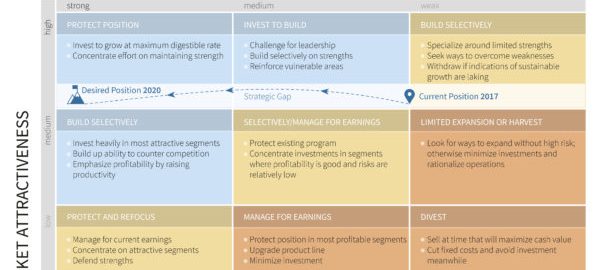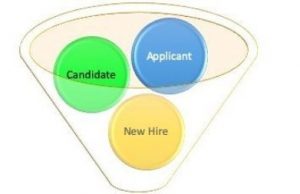Three tools to help you plan on where you want your company to be in 2022
At this time of year it’s natural to focus on the following twelve months. There are 2017 budgets to be allocated, marketing campaigns to be planned, resource and hiring forecasts to be plotted.
Yet few executive teams take this opportunity to decide where they want their company to be playing in five years’ time. What niche will they dominate at that point? Which competitors will they have acquired and what strategic alliances will they have formalised? Most importantly, what are the strategic gaps that they need to work on right now to ensure they will have achieved that winning position in 2022?
As we know, much can happen in a five-year period. The days of purely deliberate strategic planning are gone. Best practice now suggests a combination of planned and emergent strategies (Henry Mintzberg can explain more on this!). But executive teams do need to use a formal framework and strategy tools in order to help them plan for their assured long-term global domination!
A comprehensive review of all of the tools is beyond the scope of this article, so instead I will focus on three that I find most useful when working with our clients during our strategy development workshops:
- P.E.S.T.L.E
This is an excellent tool for analysing the macro external environment in a structured way. The acronym represents the six elements to be considered:
- Political, Economic, Social, Technological, Legal, Environmental
Depending on your industry and focus, some companies also include “G” for Governmental. It is important to highlight that “Social” is not just social media. It is the entire range of influences from wider society.
The way to use P.E.S.T.L.E is to consider both the importance and trajectory of factors within each element. For example, in the U.S. there will soon be a newly elected Republican President and a Republican-controlled Senate. How do you expect that “Political” factor to impact on government spending over the next four years? Could that affect your business in a strategically important way? Does it present an opportunity or a threat? Or perhaps it is not a particularly important factor for your company at all.
P.E.S.T.L.E is useful in helping you paint a picture of how the world might look for your company in five years time, and help identify any waves that you might ride to accelerate your growth. It can also help identify threats and obstacles and give you breathing space to decide how you will deal with them in a planned way.
- W.O.T
Most people will have at least heard of S.W.O.T analysis. I find it to be a very useful way to link the analysis of the external environment (as we did with P.E.S.T.L.E) and the internal environment within the company. S and W stand for Strengths and Weaknesses and represent the internal aspect of the company while O and T are the external factors representing Opportunities and Threats facing the company.
- GE Matrix
Once the company’s strengths and weaknesses have been mapped out against the external opportunities and threats we can start to look at how the company might “play to win” in the future. The General Electric Matrix is a wonderful tool to bring all of this together and help the executive team to decide which market segments they want to dominate in five years time, what strengths they will use to get there, and most importantly, what strengths they need to build in the meantime if they are to get there.

VAR Strategy
The GE matrix uses two axes. The vertical displays how attractive a market segment is to the company, while the horizontal shows the company’s current strength in that segment. The matrix is simply a tool, so you can use it for a single product, a business unit, or your company as a whole.
The GE Matrix is helpful in identifying “Strategic Fit” (matching your current strengths to specific market segments) and more importantly, “Strategic Gap”. The Gap helps the executive team to identify a market segment that is highly valuable to them, but where they have more work to do in order to be able to win there. It helps identify additional investment and resources that will need to be put in place over the intervening years in order for the company to be able to dominate that particular segment.
So once you get into planning mode, don’t just stop at 2017. Keep going and map out your route to world domination by 2022!
Business & Finance Articles on Business 2 Community(82)







